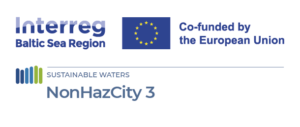Frequently Asked Questions
These are man-made chemical substances that can cause harm to the environment and human health. Basically all chemical substances can have such effect if used in big amounts and without taking necessary precautions. However, our main concern lies with man-made synthetic substances such as phtalates, PBDEs, parabens, PFCs and others that have specific properties making their long-term negative effects very hard to predict. They are still widely used in production despite the existence of readily available safer alternatives.
In general the hazards of a substance depend on its chemical-physical properties and these cannot be changed, just as the color of your eyes are a characteristic of your body and cannot be changed. The hazards which substances may pose and the related damage they may cause can be different. Serious hazards to human health is the potential to: cause cancer, impair the possibility of humans to have (healthy) children, or damage the genes. In addition, substances may disturb the functioning of the hormone system or cause allergies. Substances may also cause severe hazards to the environment (and to humans because they can be found in food from the environment) if they are: Persistent, which means that they are not destroyed in the environment and could remain there for years or decades and their amounts would increase over time. Bioaccumulative, which means they are stored in animals or humans often in fat tissue or blood. These bioaccumulative substances finally end up in our food, e.g. fatty fish.
Hazardous chemicals can occur from natural sources or from our industrial production. They are used for the production of our everyday consumer products or used in very small amounts as additives or components that fulfill a certain function to give a certain property to the end-product. For example, phthalates are used to make plastic softer. When we buy and use different products every day, we are exposed to a variety of hazardous substances which may be released from products during their use and life-cycle.
Yes, you should! Some hazardous substances may cause effects, even if we come in contact with them in very small amounts and exposure to substancdes which may cause cancer or genetic damage should be minimized “just to be on the safe side”. In addition, we are not only exposed to one single substance at a time but to many different chemicals (the so called cocktail effects) and we don’t know if and how these different substances may interact and influence the type and extent of a negative effect; some substances, in particular endocrine disruptors may cause effects at low concentrations; some scientists believe that the constant low level exposure to many different hazardous chemicals weakens our immune system and our ability to react to stress. One indication that this theory may be true is the increase in allergies in the general public. Therefore, according to this theory any reduction of chemical exposures may contribute to an improvement of our health.
Hazardous substances can be emitted from consumer products, e.g. if they are contained in shampoos they are emitted with the water to the sewage system. They can also be emitted from industrial processes and production sites into air, water or soil. Sometimes these emissions occur directly to the natural rivers and lakes and sometimes wastewaters are cleaned in municipal or industrial wastewater treatment plants. These treatment plants destroy or remove the majority of hazardous substances from wastewater; however, a small amount of them is still released to the natural waters or are not destroyed or removed at all. Chemicals may also be emitted from different products when they get older or are used under extreme conditions (e.g. substances used in car tyres wear off with the rubber during driving because of abrasion). Also these substances end up in the environment.
The main concerns regarding hazardous substances in the environment is that they may disturb the functioning of eco-systems. Such disturbances may relate to the stability of populations of specific organisms, for example some substances cause gender change in fish, which results in growing number of male individuals and a subsequent decrease in the population size. They could also affect many different organisms, e.g. if they increase the overall environmental stress factors and thereby decrease the functioning of the overall ability of an ecosystem to restore its natural condition.
Hazardous chemicals may come into contact with or enter the body on three main pathways: 1) Contact to the skin already occurs if the substance remains on the skin surface. In addition, substances may penetrate the skin and the mucous membranes of the eye. If they enter the body they may be transported to different body parts. 2) Through our regular breathing we may inhale hazardous substances in the surrounding air. Chemicals can either directly deposit in the lungs or be absorbed into the bloodstream and distribute to different body parts. 3) Some substances enter our body via food or accidental ingestion. They can be taken up into the bloodstream in the various parts of the digestive system and distributed within the body.
Children are more sensitive to hazardous chemicals exposure because: The ratio of their skin surface and weight is greater than that of an adult, therefore the ration between chemicals entering the body and their body weight is higher (higher concentrations inside the body); Baby’s skin is considerably thinner than that of adults and the function of the skin as a barrier is not fully developed; Breathing systems are still developing, children tend to breathe through their mouth; smaller airways get clogged with pollutants faster; They have less effective metabolisms; Immune and nervous systems are still developing and can be harmed even by small amounts of toxic substances; Children have a quicker uptake of chemicals and a slower removal from their bodies and their organs and immune systems have fewer defenses against chemical attack; Children are particularly vulnerable to endocrine disrupters because they interfere in the body’s general development.
Due to new legislation on chemicals, scientific evidence of adverse effects of individual substances on human health is increasing. The information which substances may cause which specific health effects will further improve over time. Although our knowledge of effects of individual substances is improving, we have comparably little information on the effects of these chemicals if they occur together. This is particularly worrying as we are usually exposed not only to one substance at a time but to a high variety of different substances in parallel. This is commonly called the “chemicals cocktail”. An additional concern is that there are certain health effects which are only known since a short time. This mainly relates to endocrine disruption for which there are not clear criteria to decide whether or not substances exhibit these properties or not. These substances could have an effect at extremely low doses and may be particularly potent to young children. Since there are so many uncertainties about ‘cocktail effects’, endocrine disruption and the effects of life-time exposures to low amounts of chemicals, any exposure reduction to chemicals is likely to contribute to improved overall health, although this may not be directly visible to us.
The most hazardous substances are in fact prohibited for use, at least on the EU – market. Other, also very hazardous substances are forbidden to be used in particular products, such as children toys. However, according to our regulatory system, use restrictions for hazardous substances can only be implemented in legislation if it is proven that there is a risk for man or the environment from the individual substance. Consequently, risks from exposure to several substances cannot be addressed by legislation. Also, if risks are not identified yet, regulation is hardly possible. Secondly, even if hazardous substances are restricted in the EU, there may be companies which nevertheless use these substances and hence breach legislation, whether knowingly or because they are not aware of these obligations. Imported products appear to more frequently in-compliant with legislation than EU-produced products.
It is impossible to avoid exposure to hazardous substances completely, because they are already widely spread not only in our indoor environments, but in the natural environment as well. However, although we cannot completely avoid hazaroud substances, we should take every effort and opportunity to reduce the numbers and amounts of substances contained in the chemical cocktail we are exposed to. Therefore: think before you buy! Read the labels carefully and learn to recognize and not to buy harmful ingredients Ask retailers and producers for products with less hazardous substances Use products only according to the instructions of safe use Wash new toys and textile before use More information how to avoid exposure can be found our website under each product group.
Browse through the information under different product groups and chemicals of concern on our website, print out and take with you one of our guidebooks when going shopping or watch videos if not eager to read. There is also quite a lot of information about the topic on different internet pages.

